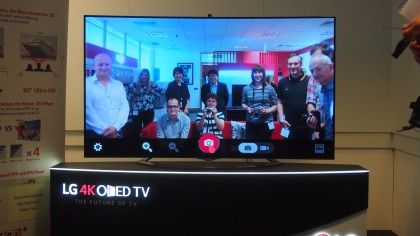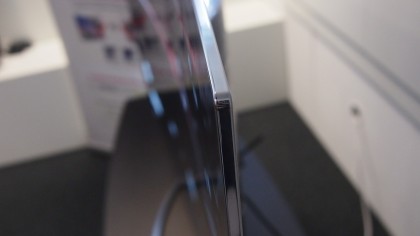Has LG made a big breakthrough in OLED TV production?
LG M2 factory promises cheaper prices in the future

Everyone knows that if you can get it working, OLED offers far superior picture performance in practically every way that we can measure.
It's also thinner and lighter, easier to curve if that's your thing, has a faster response time, wider viewing angles and has far better power efficiency compared to LED. It's the holy grail of display technology.
The problem is that the first great OLED breakthrough was hailed as far back as 2008 when Sony put the first OLED TV on sale - the minuscule 11-inch XEL-1 which cost $227 per inch for a total price of $2,499.
And since then, progress has been slower than a Windows Vista BloatTop cold boot.
At this year's IFA show in Berlin, OLED products were as rare as plasma - a technology that everyone has now abandoned, including LG.
Sony, Panasonic, Samsung have all mouthed a lot of phonetic OLED-shaped noises in recent years, but it seems that only LG has found a manufacturing method that really works. The full HD 55EA9800 came out earlier this year and yeah, it was a little bit good.
Now though, LG is starting to sound bullish about OLED finally coming of age and is ready to start launching 4K OLED products.
Get daily insight, inspiration and deals in your inbox
Sign up for breaking news, reviews, opinion, top tech deals, and more.

LG's plan for OLED
"The progress that LG has made here should not be dismissed. It's real, genuine progress."
It opened its new M2 factory earlier this year, where it's able to build OLED panels using its unique Oxide TFT maskless WRGB production process which is a lot more simple and has better yield rates.
As a result, this year LG will be able to produce double the number of panels compared to 2013, using the same amount of materials. In theory that means more OLED TVs at more agreeable prices.
So does this mean the floodgates are about to open for OLED? I asked LG this question at its Slough HQ this week and the answer wasn't overly positive.
"Our full HD OLED TV yield rate is really quite high", Mr K I Kwon, president of LG Electronics UK, told TechRadar.
"It's not compared with LCD TV module yield rate but it's enough to lower the price to £3000 in UK. And as you have seen we now have our M2 line factory which can make six 55-inch modules in one piece of glass and for 65-inch three from one piece of glass at the same time, whereas in M1 65-inch can make 1.5 each time which means that one third of the glass [is wasted]. So I believe the price and yield rate will be higher immediately and the price will be down."
That's not exactly a promise for the start of a new era.
Reading between the lines you can see that while progress is being made, whichever way you look at it we're still some distance from a world where OLED TVs of all shapes and sizes are available at the current prices of LED TVs.

New 4K OLED TVs
The good news, though, is that LG's first 4K OLED TV will ship in November - I've seen it and can attest that the 65-inch curved LG 65EC970V is stunning. But the cost? £6,499 in the UK - over 10,000 US dollars. A 77-inch model will be hot on its heels - don't even ask how much that one costs.
This is all both encouraging and discouraging in equal measure. Yes it's too expensive for most of us. But at the same time, the progress that LG has made should not be dismissed. It's real, genuine progress.
It's found a way to make the panels reliably and that bodes very well for the 4K OLED TVs of the future that maybe we will be able to afford. 2016, we're looking at you buddy.
Meanwhile, the aforementioned LG 55EA9800 OLED may not pack a 4K resolution but you can find it online now for just £2000 - that's in line with other top of the line 55-inch 1080p TVs. We're in a position now where we can at least conceive of a world where 4K OLED TVs from LG will start falling in price annually.
And you can bet that with LG finally making money from OLED, its rivals will be doubling their efforts to get involved.
So there's definitely hope for OLED, but as has been the case for some time now, we're still in the wait-and-see phase. Don't delay buying that new TV, basically. And certainly don't hold your breath. But don't write OLED off, either.
James was part of the TechRadar editorial team for eight years up until 2015 and now works in a senior position for TR's parent company Future. An experienced Content Director with a demonstrated history of working in the media production industry. Skilled in Search Engine Optimization (SEO), E-commerce Optimization, Journalism, Digital Marketing, and Social Media. James can do it all.
